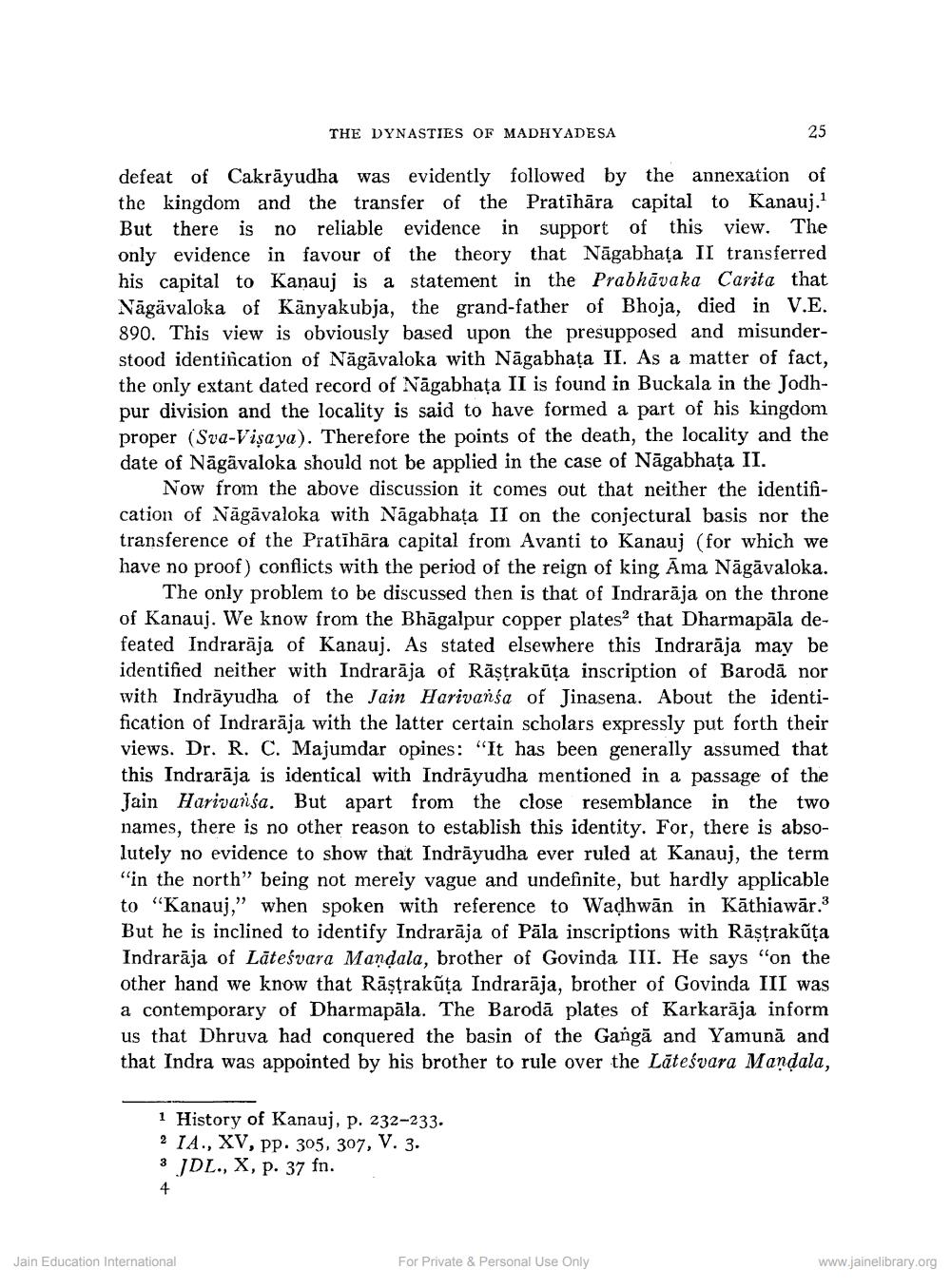________________
THE DYNASTIES OF MADHYADESA
defeat of Cakrāyudha was evidently followed by the annexation of the kingdom and the transfer of the Pratīhāra capital to Kanauj. But there is no reliable evidence in support of this view. The only evidence in favour of the theory that Nāgabhata II transferred his capital to Kanauj is a statement in the Prabhāvaka Carita that Nāgävaloka of Kanyakubja, the grand-father of Bhoja, died in V.E. 890. This view is obviously based upon the presupposed and misunderstood identification of Nāgāvaloka with Nāgabhața II. As a matter of fact, the only extant dated record of Nāgabhata II is found in Buckala in the Jodhpur division and the locality is said to have formed a part of his kingdom proper (Sva-Vişaya). Therefore the points of the death, the locality and the date of Nāgävaloka should not be applied in the case of Nāgabhata II.
Now from the above discussion it comes out that neither the identification of Nāgāvaloka with Nāgabhata II on the conjectural basis nor the transference of the Pratīhāra capital from Avanti to Kanauj (for which we have no proof) conflicts with the period of the reign of king Ama Nāgāvaloka.
The only problem to be discussed then is that of Indrarāja on the throne of Kanauj. We know from the Bhāgalpur copper platesể that Dharmapāla defeated Indrarāja of Kanauj. As stated elsewhere this Indrarāja may be identified neither with Indrarāja of Rāştrakūța inscription of Barodā nor with Indrāyudha of the Jain Harivansa of Jinasena. About the identification of Indrarāja with the latter certain scholars expressly put forth their views. Dr. R. C. Majumdar opines: "It has been generally assumed that this Indrarāja is identical with Indrāyudha mentioned in a passage of the Jain Harivansa. But apart from the close resemblance in the two names, there is no other reason to establish this identity. For, there is absolutely no evidence to show that Indrāyudha ever ruled at Kanauj, the term "in the north" being not merely vague and undefinite, but hardly applicable to "Kanauj," when spoken with reference to Wadhwān in Kāthiawār.3 But he is inclined to identify Indrarāja of Pāla inscriptions with Rāstrakūta Indrarāja of Lāteśvara Mandala, brother of Govinda III. He says "on the other hand we know that Răstrakūta Indrarāja, brother of Govinda III was a contemporary of Dharmapāla. The Barodā plates of Karkarāja inform us that Dhruva had conquered the basin of the Gangă and Yamunā and that Indra was appointed by his brother to rule over the Lāteśvara Mandala,
1 History of Kanauj, p. 232-233. 2 IA., XV, pp. 305, 307, V. 3. 3 JDL., X, p. 37 fn.
Jain Education International
For Private & Personal Use Only
www.jainelibrary.org




